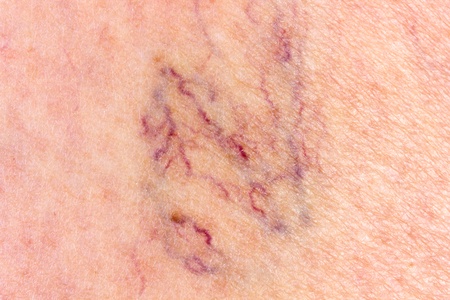
Thread Veins & Rosacea
Vascular lesions | Rosacea | Campbell de Morgan spots| Port wine stain birthmark
Thread veins are a type of skin condition, but there are many reasons why red lesions can manifest on our skin. It could be due to environmental factors, overly sensitive skin or genetics. Many individuals can suffer confidence issues as they can occur on parts of the body that are visible; this may not help individuals to function at their best in the image-conscious society we live in. Thread veins, Rosacea, and other red lesion treatments are very successful at our clinic, due to our knowledge and experience.
Why do red lesions appear within the skin?
Blood capillaries become trapped in the skin because of tissue damage. Usually, there is an inherent susceptibility to them appearing. Vascular lesions develop when the natural immune system fails to correct them. This happens when the body classifies the damage as superficial or not harmful. Nonetheless, this doesn’t stop the individual from becoming self-conscious about the lesion left behind.
What Are The Different Types Of Lesions That We Treat?
Vascular lesions (thread veins)
- Red veins vary in size and density.
- Most commonly found on the cheeks, near nostrils, legs and around ankles.
- Sometimes looks like acne due to having very small clusters of fine lesions.

Rosacea
- Usually related to blood circulatory issues and skin sensitisation.
- May be due to genetic predispositions.
- It can result in many deeply embedded small lesions.
- Inflammation (swollen or dry) is dependant on severity and skin condition.

Microhemangiomas (MHA)
- Also known as Tuzhilin’s “red drops”, senile hemangiomas, Campbell de Morgan spots, and scrotal angiokeratomas Fordyce-Satton.
- These are blood spots that become trapped within the skin.
- Usually round and typically 1-3mm in diameter.
- May increase in number with age.
Port Wine Stains
- May occur from childbirth or later on in life due to internal/external triggers.
- Most commonly occur as red or purplish lesions on the face. Size and density may vary.
- It can be due to a hereditary predisposition.
- This occurs due to abnormally dilated capillaries.
How Do We Treat Them?
We use a laser that emits light at a specific wavelength to specifically target the lesion. The haem pigment within the damaged blood vessels absorbs light that is directed onto the skin. Haem is a coloured red protein, we manipulate this characteristic in terms of light absorption. Once the blood vessels absorb the light, they heat up and the red proteins stick together (haem coagulation). Due to the laser emission being in pulses, blood vessels receive heat at critical levels which minimalise damage to skin tissue adjacent to the targeted lesion. After treatment, blood vessels suffer damage and are then flushed out of the body because of a natural immune system response. little or no trace of the initial lesion is seen when the treatment course is finished.
The Laser Process
Gentle cleaning of the skin is necessary to remove chemicals. The treatment area undergoes the application of ECG (Electrical Conductivity Gel). The ECG gel cools the area and ensures optimal light transmission from the applicator to the skin. Clear Medical therapists select the optimum setting which is safe and effective on an individual basis. The skin surface has a quartz applicator placed on it, pure white laser light passes via the quartz block through the skin. We treat Neighbouring skin areas in the same way, during a full treatment, by moving the quartz applicator. This process is done until your therapist covers the treatment area fully. Finally, we clean the skin and apply for some barrier protection. Our treatment policies specify that individuals can have treatment 5 days after a successful consultation and patch test.
How Many Treatments Will I Need?
The length and number of treatments will depend on your general health and the type/size of the lesion. Typically, clients have anything from 1 to 10 treatments. Treatment intervals are commonly every 4 weeks. We will advise you regarding the recommended interval after your initial consultation depending on your skin condition, severity and the nature of the lesion.
How Much Does It Cost?
We are proud to uniquely provide Facial Skin Prices and Skin Treatment Pricing per cm² for body areas. this ensures that at Clear Medical the pricing is concise, consistent, and fair.
What Will I Experience After Treatment?
Some clients do not notice any change in their skin after the treatment. Whereas, others observe quite red skin and can fade anything from 1 to 24 hours post-procedure. The individuals’ intensity of redness of the skin is variable. Please read our aftercare advice. Sometimes the lesion may reduce/disappear immediately or it may take up to 4 weeks post-treatment.
What Do I Do Now?
Please read through this article and call us to arrange a consultation (30 minutes). A face-to-face consultation will then be carried out which includes a patch test and is essential to select optimal settings for treatment and medical suitability.
Find out more about our skin consultations.
If you have any questions or queries, please don’t hesitate to contact us.


